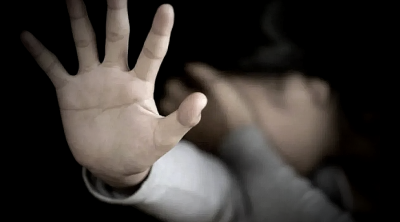Many parents were dismayed by the recent news from the Minister of Health, YB Khairy Jamaluddin, that the vaccines for children aged 5-11 years will only arrive at the end of June 2022. It means that our young children who attend kindergarten and primary school will remain vulnerable for another 7-8 months.
It is important to note that this delay is not due to a lack of effort — Malaysia is one of the earliest to have made a request to purchase the Pfizer vaccine for younger children. But as we well know, many developed nations are pushing to get the new Pfizer vaccine formulation for younger children and hence this pushes us lower in the queue, even though our negotiations were very early.
In this letter we would like to discuss what options are available to us. We will not discuss issues related to the safety of the use in young children. We refer you to documents and evidence by the CDC USA on that issue that outline efficacy, safety and risk-benefit.
What is the risk of COVID-19 infection to our 5- to 11-year-old children in the next 6 months? Do they need the vaccine?
In the past 16 weeks (4 months) there have been 325,559 reported COVID-19 cases in children (87,829 in those aged 0-4 years, 132,436 in those aged 5-11 years and 105,294 in those aged 12-17 years). Currently 10.5% of all new COVID-19 cases occur in children aged 5-11 years (see COVIDNow data). This proportion has been increasing over time. As more adults and adolescents get vaccinated, and as schools and kindergartens open up, we can expect that this unvaccinated population of young children will have more Delta variant infections. Note that adolescents aged 12-17 years now only account for 3.9% of cases due to the high rate of vaccine uptake.
At the time of writing, 116 children are reported to have died since the beginning of the pandemic (38 aged 0-4 years, 32 aged 5-11 years and 46 aged 12-17 years). 85% of deaths have occurred since July 2021, showing the impact of the Delta variant on children. Twenty-eight of the 32 deaths in the 5-11 years age group occurred between July and October 2021 (7 per month); and this happened even with all schools and kindergartens closed. As primary schools and kindergartens reopen, we can expect 7-10 deaths monthly (possibly more) for the next 6-8 months in this age group.
This does not take into account the 1 in 100 infected with COVID-19 that will be hospitalized, some seriously ill with multisystem inflammatory syndrome of children (MIS-C), and the risk of Long COVID.
Hence, if we do not vaccinate our 5-11 year old children now, they are in for a difficult 6-8 months ahead.
Can we do anything about this? Can we use a small dose of the vaccine for teenagers/adults to vaccinate younger children?
We must use every mitigation measure available to us to minimize the risk of COVID-19 infection in our young children. This means making sure that kindergartens and primary schools have excellent ventilation, ensuring that every adult around them is vaccinated, maintaining good filtration/fit mask use, using classroom bubbles, limiting unnecessary social contact, hand disinfection and continuing to maintain physical distancing.
One suggestion has been to use the Pfizer vaccine for teenagers/adults in children aged 5-11 years at the smaller dose. Is this feasible? The vaccine approved for children aged 5-11 years is identical to that for older persons except that we give 10 mcg instead of 30 mcg (one third the adult dose). This would mean administering a 0.1 ml dosage of the adult/adolescent formulation but the logistics that these small volumes are not unprecedented. For decades our nurses have been administering 0.1 ml of IM Vitamin K and intradermal 0.05 ml of the BCG vaccine. Training of nurses and vaccinators will be required for them to be familiar with the small volumes.
However, this reduced dose Pfizer vaccine for young children is repackaged – not just a lower dose schedule but contains a different buffer allowing longer refrigeration at higher temperatures (see graphic from the CDC, USA below comparing the formulations; it can be stored at refrigerator temperature of 2-8C for up to 10 weeks).
Hence, it is the same vaccine, just repackaged. The problem will be that if we use the adult formulation, it will be considered off label use by the company. This means use at your own risk and this may open governments to litigation.
Should we do this? Many parents we have spoken to are keen to get the vaccine now, rather than wait 6-8 months for their children. The preventable death of a single child is unacceptable to any parent or child health professional.
If we opt to take this approach, we will need parental understanding and consent. As in the delivery of any vaccine or drug, care needs to be taken to avoid any errors in dose during administration i.e. make sure children get only a 10 mcg dose. Our National Pharmaceutical Regulatory Agency (NPRA) will also need to give conditional approval for such a move. In addition, our NPRA must have a vigilant surveillance on vaccine safety signals (side effects) and act early if any appear. The public and parents should be notified ongoing of all serious side effects.
A minimal approach is to vaccinate all our vulnerable 5-11 year old children. Of the 116 children who have died, 83% had comorbidities. So we could offer the adult formulation (using 10 mcg dose) to all children with chronic illness, disabilities, etc as a initiative to reduce deaths.
It is important that any approach we take should not deprive older people from booster vaccines doses.
 What other countries are vaccinating children aged 5-11 years? What about Sinovac in young children?
What other countries are vaccinating children aged 5-11 years? What about Sinovac in young children?
Different nations are using different vaccines to extend the protection to young children. The United States has started vaccinating young children in November 2021 with Pfizer. Israel has approved Pfizer and hopes to start very soon. Singapore hopes to get the new Pfizer formulation by January 2022 and extend their vaccination to cover young children. The European Union medical regulators have begun evaluating the use of Pfizer in young children. China has authorized use of Sinovac and Sinopharm vaccines for children 3-17 years. The United Arab Emirates has approved Sinopharm (3-17 years) and Pfizer (5-11 years) use. Argentina is vaccinating children as young as 3 years with Sinopharm vaccine. Indonesia, Chile and Ecuador have approved Sinovac vaccine for children aged 6 years and above.
Although Phase I and II clinical trials on Sinovac in young children have been published, we have yet to see data on Phase III trials (unlike Pfizer). Sinovac has been given to more than 60 million teenagers in China; however no safety data has been made public. It would be good to get Phase III efficacy and safety data on Sinovac before any use in young children. Our MOH has embarked on a phase 3 clinical trial using Sinovac vaccine for children aged 3-11 years but the results of this will only be available many months from now.
Reducing our COVID-19 related child mental health pandemic.
Our children have been living not just in a COVID-19 pandemic but also in a mental health pandemic. The enormous disruption in schooling (among the longest duration in the world) and loss of social interaction has had a serious toll on our children. Many are anxious and afraid. Others have become disinterested in school, having regressed in their learning. Some have trouble with sleep and loneliness. Getting our children safely back to school is one initiative to deal with some of these concerns. Vaccination is one strategy to make this happen. Data has shown that the benefits of vaccination outweigh the risks. Vaccinating children will also benefit the larger society and reduce spread of COVID-19, hence reducing breakthrough infection and serious illness in vulnerable adults.
We hope this article opens a dialogue that can enable the early vaccination of our young children. Parents should advocate with the health authorities for the option suggested here. If there is no way for the authorities to expedite the Pfizer vaccine formulation for young children then we ask our MOH and the National Pharmaceutical Regulatory Agency to kindly consider this option of using 0.1 ml of the adult formulation with appropriate training and briefing of healthcare workers involved.
Signatories:
Dato’ Dr Amar-Singh HSS, Consultant Pediatrician
Dr Hung Liang Choo, Consultant Pediatrician
Dato’ Dr Musa Mohd Nordin, Consultant Pediatrician
Datuk Dr Zulkifli Ismail, Consultant Pediatrician
ADVERTISEMENT
ADVERTISEMENT








































